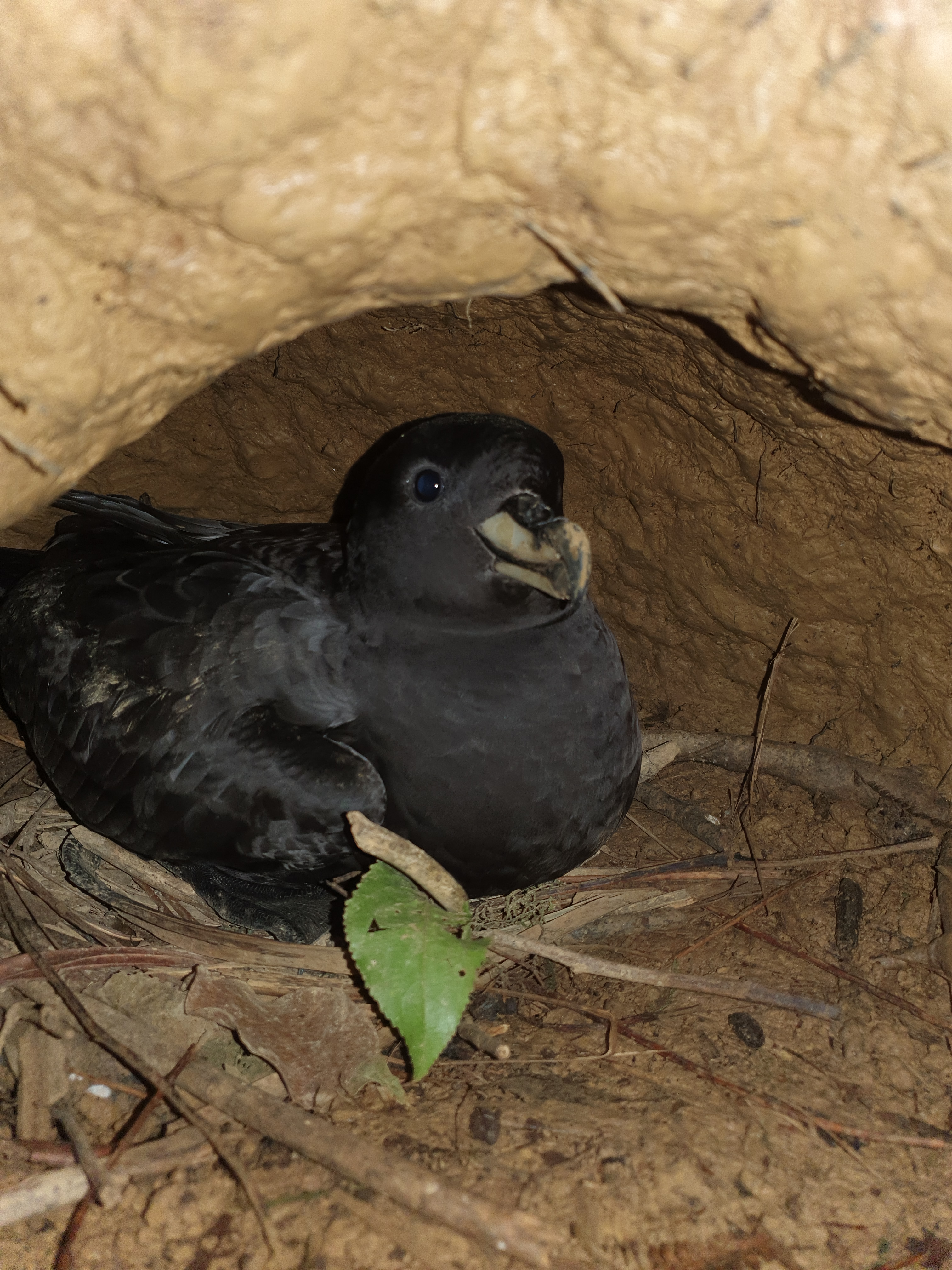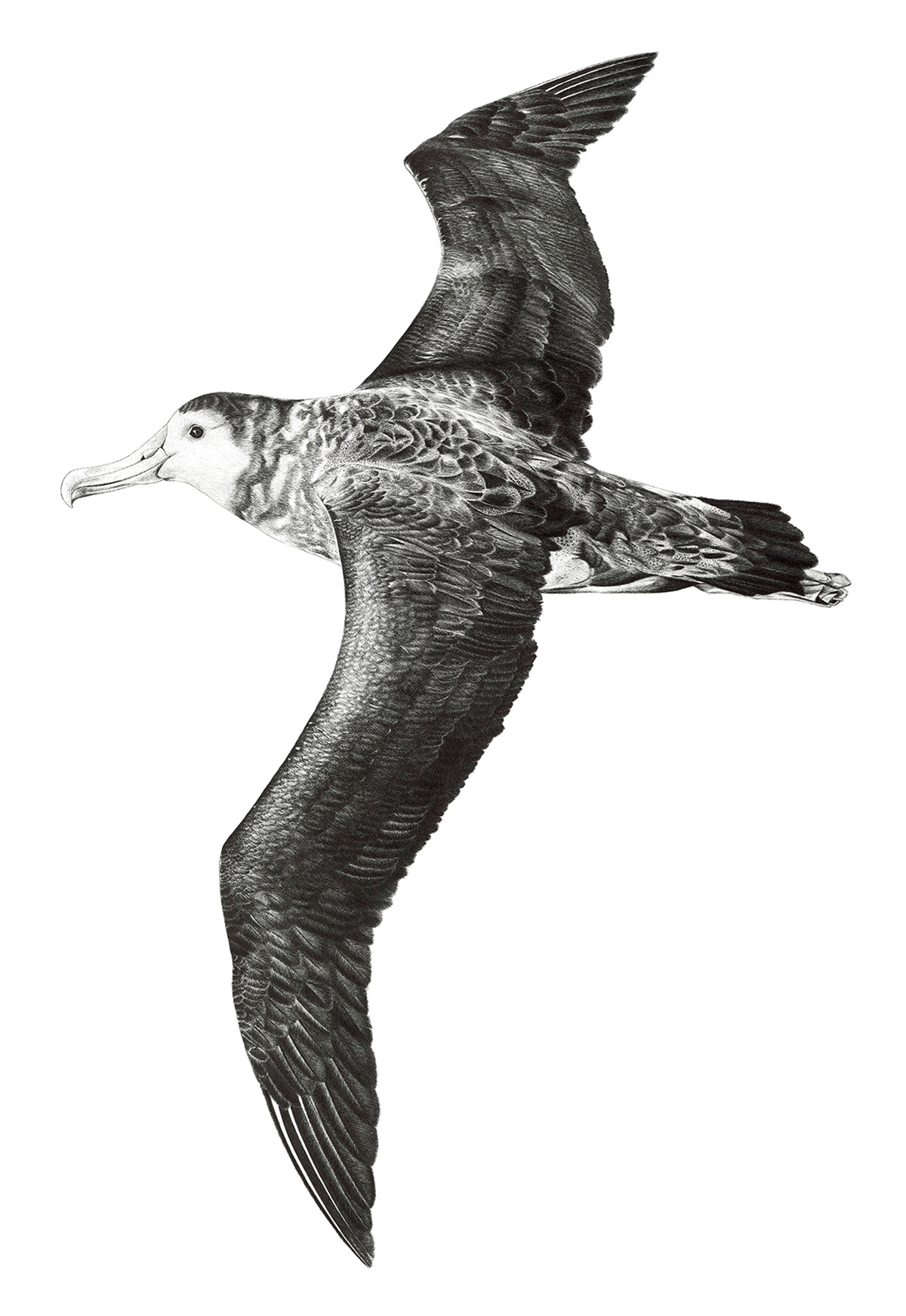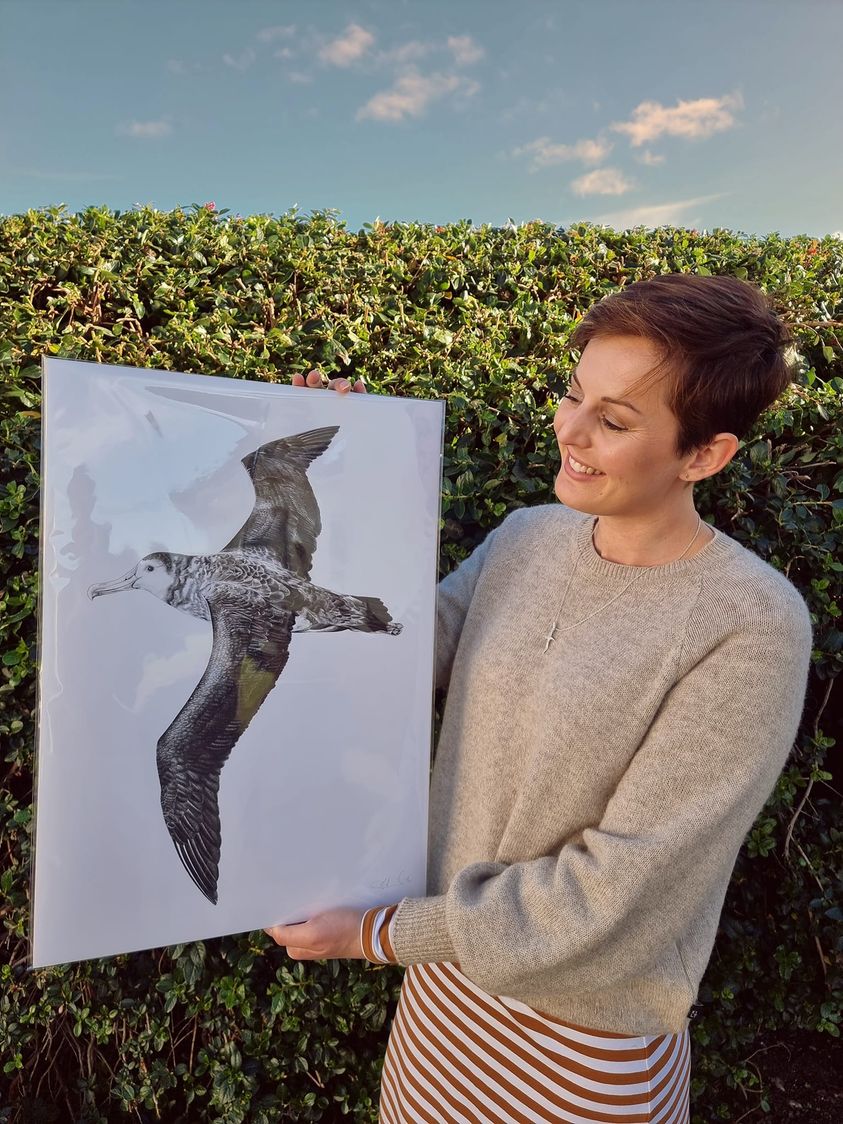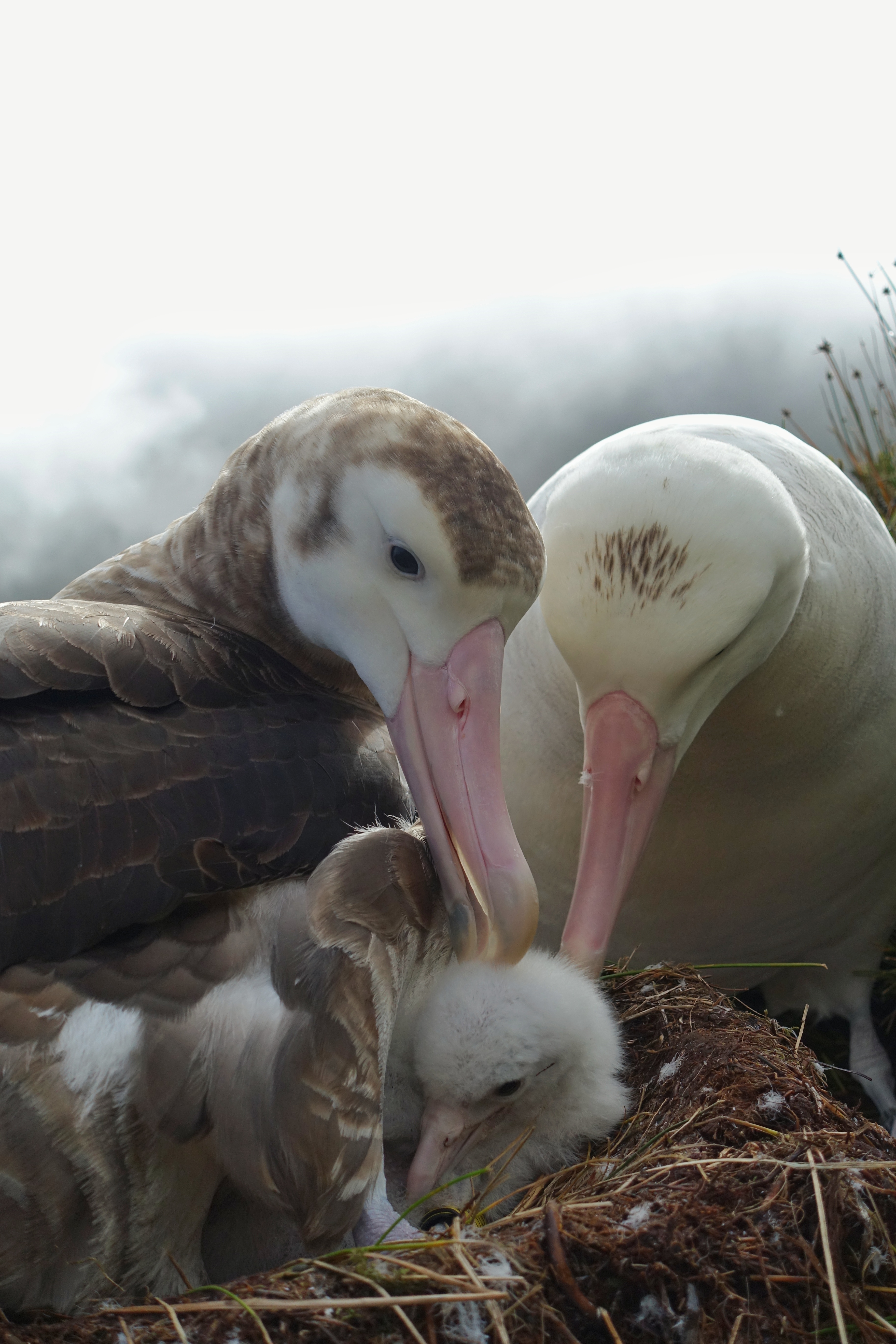Dedicated to the memory of Kerry-Jayne Wilson MNZM, 6 March 1950 - 29 March 2022
“Albatrosses and other seabirds are under threat, and climate change will further intensify that threat. Imagine a world without these magnificent birds, is that the legacy we want to leave for generations to come?” - written for the inaugural World Albatross Day on 19 June 2020
What must be one of her last writings is her Photo Essay for the ACAP-listed Westland Petrel (click here)
 Westland Petrel by ABUN co-founder Kitty Harvill for ACAP, acrylic on canvas; after a photograph by Frank Valckenborgh
Westland Petrel by ABUN co-founder Kitty Harvill for ACAP, acrylic on canvas; after a photograph by Frank Valckenborgh
Note: The illustrated Species Summaries have been written to help inform the general public, including school learners, of the biology and conservation needs of the 31 ACAP-listed species. They serve to complement the more detailed and referenced ACAP Species Assessments. To date, summaries for the 22 species of albatrosses have been produced in in all three ACAP official languages, English, French and Spanish.
Texts have also been prepared for the nine ACAP-listed petrels and shearwaters in English, but as yet have not been translated into French and Spanish. As an interim service, the illustrated English texts are being posted to ACAP Latest News, continuing here with the Westland Petrel Procellaria westlandica.

Kerry-Jayne Wilson with a Westland Petrel; photograph by Susan Waugh
The Westland Petrel is one of five medium-to-large petrels within the genus Procellaria, along with the Black, Grey, Spectacled and White-chinned. Among all the petrels and shearwaters in the family Procellariidae they are the largest that dig and breed in burrows. The species is overall dark brown to black, with black legs and feet. The bill is pale yellow with a black tip. It is similar in appearance to the smaller Black Petrel.
The Westland Petrel is a New Zealand endemic that currently breeds at only one locality: in hills close to the small community of Punakaiki on the west coast of South Island. It previously had a slightly larger known breeding range. The species’ population has been estimated as consisting of around 3000-5000 annually breeding pairs; including non-breeders the species’ adult population may be up to 14 000 birds. Population trend remains uncertain. At-sea non-breeding range extends to the east coast of Australia (rarely) and to the Pacific coast of South America. Satellite tracking reveals breeding birds tend to forage over the New Zealand continental shelf and slope.Westland Petrels breed colonially in the austral winter, laying their single eggs in burrows dug between tree roots in a dense mixed podocarp forest. Diet includes fish and squid caught by surface seizing and shallow dives. Scavenging on fisheries waste from both longline and trawl vessels also occurs.

A Westland Petrel inside its burrow; photograph by Kate Simister
The species is at risk to fishing, being occasionally caught on longlines and interacting with trawls when scavenging behind vessels. Land-based threats include introduced mammals (Common Brushtail Possums, rats, feral cats, dogs and goats, and potentially feral pigs) at the breeding locality and nearby street and village lights and power lines downing fledglings which can then fall victim to road traffic. Breeding birds are at risk to severe storms destroying burrows. A 2014 storm damaged half the breeding colonies. The Westland Petrel has a global threat category of Vulnerable and is nationally Naturally Uncommon.
The Westland Petrel breeding site is largely contained within a Specially Protected Area which abuts the Paparoa National Park. Entry, included by guided tourists via a walkway and viewing shelter, is by permit. Traps are set alongside the walkway to catch Stoats and rats. Recent efforts have been made to reduce downing by switching off streetlights during the fledging season with some success. The species is listed within the Albatross and Petrel Agreement (ACAP) and the Convention on Migratory Species on Appendix II. The charity Westland Petrel Conservation Trust works to promote, support and actively engage in the conservation, preservation and protection of the Westland Petrel.
Sources:
ACAP 2012. Westland Petrel Procellaria westlandica.
Bell, E.A. 2013. Westland petrel. In: Miskelly, C.M. (Ed.) New Zealand Birds Online.
BirdLife International 2021. Species factsheet: Procellaria westlandica.
Wilson, K.-J. 2021. Featuring ACAP-listed species and their photographers: the Westland Petrel by Kerry-Jayne Wilson. ACAP Latest News, 16 September 2021
John Cooper, ACAP Information Officer, 30 March 2022





 English
English  Français
Français  Español
Español  Westland Petrel by
Westland Petrel by 




